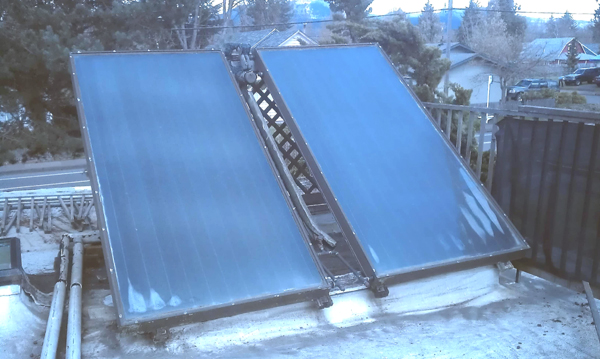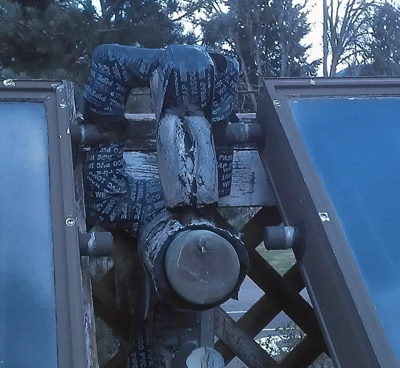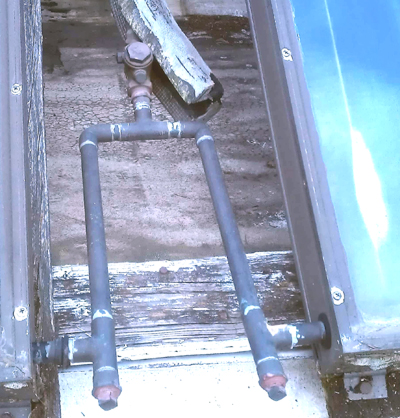Last week, I was on a familiar road in Springfield, Oregon and remembered that a friend had installed one of our early prototypes there, on his home. I glanced through the trees and saw the back of the system on his roof. Today I looked at my contact list in my phone and found his number. I haven’t talked to him for at least 10 and maybe 20 years. I called the number. A woman answered, and I asked, “Nancy?”. She said yes. We started talking, and she immediately remembered me and said, “we think of you every time the sun is out and we’re enjoying our free hot water.” I told her that’s why I was calling and told her about what I’m doing with this web site. Then I talked to Dan, her husband and he started telling me how wonderful the system has been, and that he had had a leak in one of our experimental fittings about 10 years back, and he was able to fix it himself and recharge the system. He said it hasn’t working at the optimum level since then, but they are still able to turn off the breaker to their electric water heater in May and turn it back on in September or October. They invited me over to take some photos, and I took the opportunity today to ride over on my scooter because it’s supposed to rain here for the next 6 days.
This system was installed in 1987, the year we started Sage Advance. These collectors started out with internal vapor condensers made of 1″ copper pipe the width of the collectors. We realized that in hot weather, the density of the solar fluid expanded enough to fill the vapor condenser and then stop the system. We just capped off the internal VC and installed an external VC made of 3″ copper pipe.
This is the external vapor condenser. Notice the capped off 1″ pipes protruding from the collector box at the same level as the top of the external vapor condenser. Those are the defunct internal vapor condensers. Also notice the drain port in the top of the 3″ copper cap facing the camera. That’s the resting fluid level in the system. That drain should probably be about 1/2″ from the bottom of the cap. I’m surprised that this system operates at all.
When the weather here improves, I’ve promised to help Dan modify and restart his system. We should be able to get the Delta-T down to less than 20 degrees F.
Before we realized the solution to the bubble nucleation problem, we could only get the earlier prototypes to operate by using a check valve. Without bubble nucleation the boiling was so violent that it would drive the cold water back up the faller, so we put in a check valve. We HATED the check valve. It was our only moving part. Therefore, it was evil. This one is still working, but I still hate it and vow to remove it when I help Dan modify the system.




G’day Eldon – It has been 18 years since we talked in your office about my desire to manufacture the CC in Russia. Last year I convinced my Dad he should be heating his DHW and providing preheat for the in-floor heating loop using solar thermal energy technology rather than with electricity generated via our PV system because of the system efficiency advantage you mention. Hoping to find your CC still on offer from Sage Advance, I did an internet search, and finding none, hit upon Arnoud Van Houten’s self-regulating solar pumping system with Sunnovations. It is interesting to learn that you’ve talked with Arnoud and Tom. It has been a good experience getting our system installed and running. Thanks for the pioneering work you did in the 80s when you introduced the CC. I used to work with Mike Marchando (a grad student helping you on the project) at the then Garrett AiResearch in Torrance, now Honeywell.